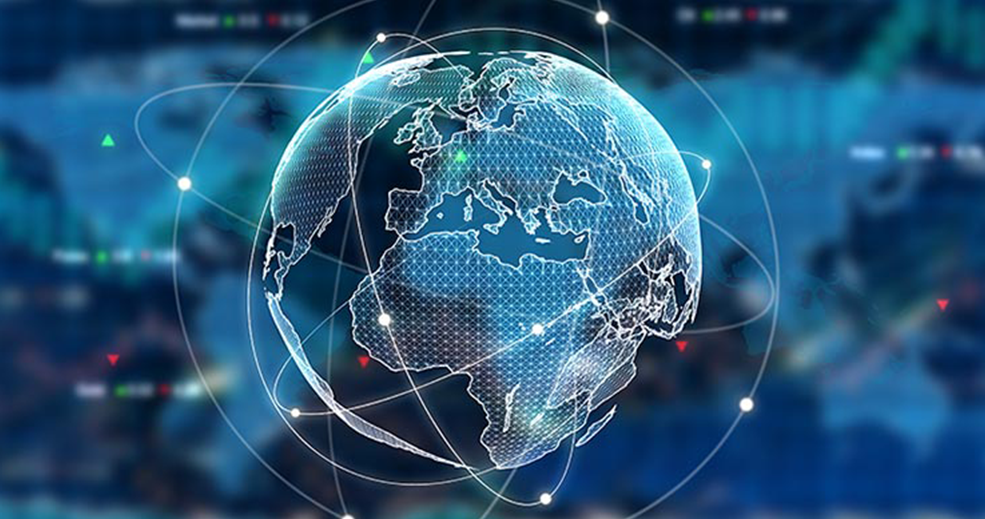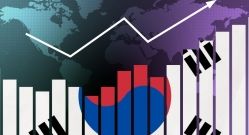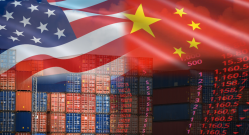
Macro-economic Scenario 2022-2023 – Between a rock and a hard place
With the military situation in Ukraine still highly uncertain, the negotiation scenarios increasingly complex and geopolitical fragmentation emerging, the scenario is still based on the assumption that the conflict will last, and so it remains extremely uncertain. While the most developed economies came through the acute phases of the Covid pandemic in robust health, they now face adversity once again. The trend they were on is bending – or maybe it is broken.
This time, adversity equals supply and demand shocks, themselves the product of a powerful upstream inflation shock or even shortages of commodities or critical inputs. Aside from the war, you see, Covid rages still, and the collateral damage of China’s strategy is obvious. Accordingly, inflation has been adjusted substantially upward and is now the key factor in the worsening outlook: inflation is averaging too high (8.3% in the US and 8.0% in the Eurozone in 2022), and it is more widespread and more persistent (4.5% and 5.4%, respectively, in 2023). Inflation is spurring earlier and more substantial monetary tightening and revising the growth scenario dramatically downward while also surrounding it with downside risks.
Far from the centre of the conflict, and still over-stimulated from anti-Covid strategies, the US should be quite resilient in 2022, during which even more volatile growth (2.6% on average) is expected to continue outpacing the trend. There are two key spring-backs keeping growth from folding and cushioning consumers from high inflation. Households’ financial situation is sound, with abundant savings just starting to be dipped into. The big wage hikes – mostly on the lower end of the income spectrum – are being fuelled by tensions on the job market and are partially offsetting price jumps. But the supporting factors are falling away, and the risks are piling up. The effects of those risks are likely to be visible in 2023 and lead to a marked slowdown: not a ‘full-blown recession’, but a ‘growth recession’ in which the unemployment rate rises slightly and growth stays positive but, at 1.5%, lags behind its potential. This opens the door to a possible technical recession, although that is not our central scenario.
In the Eurozone, solid private-sector fundamentals and the post-omicron rebound are no match for the war’s wreckage. The cut in natural gas deliveries and the embargo on Russian oil and coal are creating a major (though still limited and local) negative supply shock. Depending on what options there are for substitutions, and how critical natural gas is to production processes, sectors and countries are feeling it differently. Yet it is through inflation, dwindling purchasing power and demand that the Russian energy supply shortage is having its depressive effects. While the wage response is presumed to be moderate, government measures to aid households and the extra help from the surplus savings accumulated with the crisis are not entirely offsetting the loss in purchasing power reflected in the slowdown in consumer spending.
Boosted by a high carry-over effect, growth remains high (2.5%), but the average quarterly pace is barely above zero. As inflation moderates, growth will rebound slowly in Q223, reaching an annual average of 1.1% but suffering from the assumption, priced into our forecast, of production limits in some sectors. However, the risk scenario is highly likely: a scenario pinned on a cut-off of Russian natural gas supply, with the impact costing almost 2ppt.
In emerging markets, the risk of stagflation hangs heavy. Those countries are up against an acute growth/inflation dilemma (more violent inflation and growth shocks), though there are scant (or, for some, no) means of solving it, and tightening global financial conditions are a real challenge. So now emerging countries are moving into a dangerous phase – one that threatens the most fragile, fiscally and/or financially but also socially. And as usual, they are doing so disjointedly. The region most solidly stuck between the rock (growth) and the hard place (inflation) is, of course, Central Europe. On the other extreme, the Gulf countries are basking in their revenues. Latin America, prey to high inflation and strenuous monetary tightening, is still benefiting from better terms of trade, which are not solving fiscal constraints but, in the short term, are easing them. Asia is enjoying lower inflation and more resilient growth, but the energy-importing countries there are struggling with growing current account deficits. Asia stands to gain from the hoped-for Chinese recovery late this year (though it is easy to wonder how, without powerful – and traditional – public support, China will be able to achieve growth of “around 5.5%”). Meanwhile in Africa, high inflation and rising food insecurity are intensifying the continent’s weaknesses and prolonging the damage from the pandemic.
Higher, more widespread and potentially more persistent inflation has toughened rhetoric and subsequently action from central banks. While the US is justifiably well ahead in the tightening cycle, the Bank of England is taking a more cautious (even ambiguous) approach and the ECB is only just starting to hike rates.
In the US, our scenario is based on a series of rapid increases bringing the target Fed Funds rate to 3.50-3.75% at the end of 2022, well above the median neutral estimate (2.50%). In spite of the priority given to controlling inflation (and to headline, not core, inflation), the anticipated slowdown may limit the extent of further hikes in 2023: our scenario assumes a stabilisation of the Fed Funds rate next year. In addition, normalisation of the Fed’s balance sheet will continue as announced in May, adding to tighter financial conditions.
After ten years of uninterrupted accommodative monetary policy in the Eurozone, the ECB will initiate rate lift-off starting in July. After the PEPP stopped in March, net purchasing under the APP is ending, and the central bank will make its first rate increase (25bp, bringing the deposit rate to 0.25% and the refinancing rate to 0.25%). The ECB’s clear focus on controlling inflation is expected to bring these rates up to 0.75% and 1.25%, respectively, by end-2022 before greater pragmatism prevails, fuelled by clear signs of economic slowdown, pushing them down to 1.25% and 1.75% at the close of 2023. Meanwhile, TLTRO redemptions in 2023 should further restrict monetary policy through the quantitative tightening channel (reducing excess liquidity and returning ECB collateral to banks, then investors).
Under the influence of current and anticipated inflation spurring more proactive monetary tightening, interest rates have recovered significantly and proven more volatile. This upward trend is likely to continue. In the Eurozone, this is combined with higher sovereign risk premiums that are a concern for the ECB. In the US, the aggressive rise in key rates is expected to lead to a 10Y Treasury rate of nearly 3% at end-2022 and a sharper inversion of the rate curve. In the Eurozone, the rise in key rates without quantitative easing is upping financing costs, refocusing market attention on public debt trajectories and causing spreads to widen enough to bring back the risk of financial fragmentation. ECB members are saying that an ‘anti-fragmentation’ programme could be ready before summer ends. Given the legal constraints, this ad hoc tool should, at best, slow the widening of spreads: markets are expected to stay volatile and investors to stay prudent.
Consult our publication: World – Macro-economic Scenario 2022-2023: between a rock and a hard place, 1st July 2022












